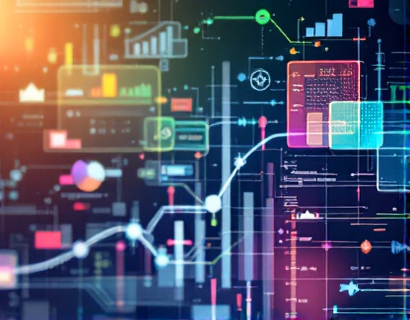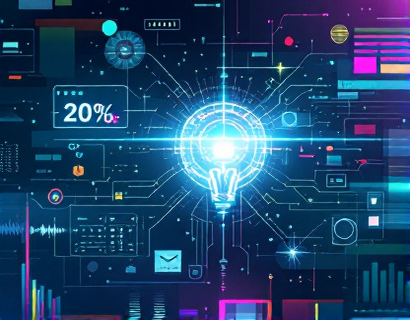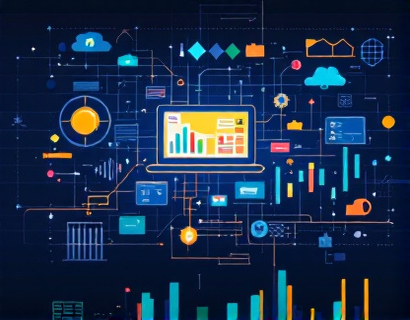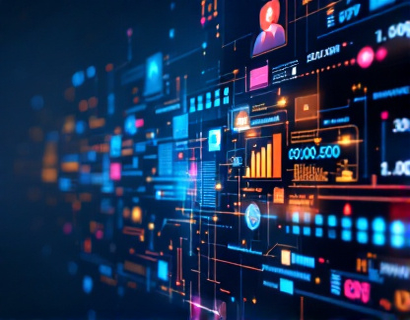Unlocking Digital Efficiency: Harnessing AI and Crypto for Next-Gen Productivity Tools
The digital landscape is rapidly evolving, driven by advancements in artificial intelligence and cryptocurrency technologies. These two powerful forces, when merged, have the potential to revolutionize productivity tools, offering unprecedented levels of efficiency and intelligence. This article delves into the intersection of AI and cryptocurrency, exploring how these technologies can be harnessed to create next-generation productivity solutions that redefine task management and streamline workflows for tech-savvy innovators and early adopters.
Understanding the Synergy Between AI and Cryptocurrency
AI and cryptocurrency may seem like disparate entities, but their convergence opens up a world of possibilities. AI, with its ability to process vast amounts of data, learn from patterns, and make intelligent decisions, can significantly enhance the functionality of digital tools. Cryptocurrency, on the other hand, provides a decentralized, secure, and transparent means of transaction and data storage. When combined, these technologies can create robust, autonomous, and trustworthy productivity solutions.
AI-Driven Automation
One of the most immediate benefits of integrating AI into productivity tools is the automation of repetitive and time-consuming tasks. AI algorithms can analyze user behavior, predict needs, and automatically execute tasks without human intervention. For instance, AI-powered virtual assistants can manage schedules, prioritize emails, and even draft documents based on context and previous actions. This not only saves time but also reduces the cognitive load on users, allowing them to focus on higher-value tasks that require human creativity and critical thinking.
Enhanced Data Analysis and Insights
AI's strength lies in its ability to process and analyze large datasets quickly and accurately. In the context of productivity tools, this means providing users with deep insights and actionable recommendations. For example, AI can analyze project data to identify bottlenecks, suggest optimizations, and forecast outcomes. This data-driven approach ensures that decisions are based on solid evidence, leading to more efficient and effective project management.
Decentralized and Secure Data Management
Cryptocurrency technology, particularly blockchain, offers a decentralized and secure way to manage data. By storing data on a blockchain, productivity tools can ensure that information is tamper-proof and accessible only to authorized users. This is crucial for maintaining data integrity and privacy, especially in industries where compliance with regulations like GDPR is mandatory. Decentralized storage also reduces the risk of data breaches and loss, providing a higher level of security compared to traditional centralized databases.
Tokenization of Assets and Incentives
Cryptocurrency enables the tokenization of assets, which can be leveraged to create innovative incentive mechanisms within productivity tools. For instance, tokens can be used to reward users for completing tasks, contributing to a community, or achieving milestones. These tokens can then be used within the ecosystem to access premium features, purchase services, or even traded for other cryptocurrencies. This gamification of productivity not only motivates users but also fosters a sense of community and collaboration.
Case Studies and Real-World Applications
To better understand the practical applications of AI and cryptocurrency in productivity tools, let's explore a few real-world examples.
Project Management Platforms
Platforms like TaskChain utilize blockchain to create a decentralized task management system. In this system, tasks are represented as smart contracts, ensuring that they are executed only when certain conditions are met. AI algorithms monitor the progress of tasks, provide real-time updates, and suggest optimizations. Users can also earn tokens for completing tasks, which can be used to hire other users or purchase services within the platform. This creates a self-sustaining ecosystem where productivity is incentivized and rewarded.
Content Creation and Collaboration Tools
Content creation and collaboration tools, such as WriteChain, leverage AI to assist writers in generating ideas, structuring content, and even drafting initial versions of articles. The platform uses blockchain to ensure that content ownership is clear and that contributors are fairly compensated with cryptocurrency tokens. AI-driven analytics provide insights into content performance, helping writers refine their work and reach a broader audience. This combination of AI and cryptocurrency not only enhances the creative process but also ensures fair and transparent compensation.
Financial Management Tools
Financial management tools like CryptoBudget use AI to analyze spending patterns and provide personalized budgeting recommendations. Transactions are recorded on a blockchain, ensuring transparency and security. Users can set financial goals and receive alerts when they deviate from their budget. The platform also allows for peer-to-peer transactions using cryptocurrency, eliminating the need for intermediaries and reducing transaction fees. This holistic approach to financial management empowers users to take control of their finances with the aid of intelligent, secure tools.
Challenges and Considerations
While the potential of AI and cryptocurrency in productivity tools is vast, there are several challenges and considerations that must be addressed to ensure successful implementation.
Technical Complexity
Integrating AI and cryptocurrency requires a high level of technical expertise. Developers need to understand both domains to create seamless and efficient solutions. This can be a barrier for smaller companies or individual developers. However, the growing number of open-source libraries and frameworks is making it easier to build these advanced tools.
Regulatory Environment
The regulatory landscape for cryptocurrency is still evolving, and compliance can be a significant challenge. Productivity tools that incorporate cryptocurrency must navigate varying regulations across different jurisdictions. Ensuring compliance while maintaining the benefits of decentralization is a delicate balance that requires careful planning and legal expertise.
User Adoption and Education
For AI and cryptocurrency-based productivity tools to succeed, users must be willing to adopt and understand these technologies. Education and user-friendly interfaces are crucial in this regard. Providing clear documentation, tutorials, and support can help bridge the knowledge gap and encourage wider adoption.
Future Trends and Innovations
The intersection of AI and cryptocurrency is just beginning to unfold, and several trends and innovations are on the horizon.
Quantum Computing Integration
Quantum computing has the potential to significantly enhance AI capabilities by solving complex problems much faster than classical computers. When combined with cryptocurrency, this could lead to even more powerful productivity tools that can process vast amounts of data in real-time, providing unparalleled insights and decision-making support.
Decentralized AI Models
Decentralized AI models, where AI training and inference are distributed across a network of nodes, can enhance privacy and reduce the risk of data breaches. This approach, combined with cryptocurrency for incentivizing participation, can lead to more robust and secure AI-driven productivity solutions.
Cross-Platform Interoperability
As the ecosystem of productivity tools grows, the need for cross-platform interoperability becomes increasingly important. Standards like InterPlanetary File System (IPFS) and decentralized identifiers (DIDs) are paving the way for seamless integration and data sharing across different platforms, enhancing the overall user experience.











































